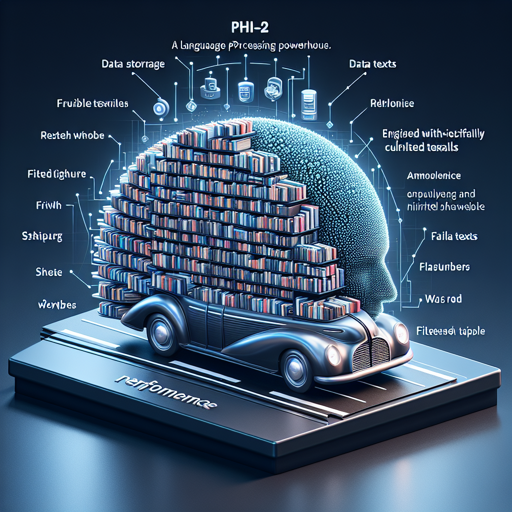Welcome to this comprehensive guide on using the cutting-edge Phi-2 model for various natural language processing tasks. Whether you’re a seasoned developer or just getting started, this user-friendly walkthrough will help you navigate the features of Phi-2 effectively.
Understanding Phi-2: A Language Processing Powerhouse
Phi-2 is a Transformer model boasting an impressive 2.7 billion parameters. Think of it as a powerful library full of books (data sources) that have been meticulously curated to provide rich and educational content. It has been trained using not only the same data sources as Phi-1.5, but also augmented with fresh NLP synthetic texts and filtered websites. Its robust design ensures almost state-of-the-art performance—similar to a well-tuned vehicle ready to take you on a smooth ride through the realms of common sense, language understanding, and logical reasoning.
How to Use Phi-2
Phi-2 is integrated into the `transformers` library; make sure you’re working with version 4.37.0 or above. Below are formats and code snippets you can use to interact with the model.
Common Formats
- QA Format: Pose your queries in a straightforward Q&A style.
- Chat Format: Create engaging conversations to explore dialogue generation.
- Code Format: Provide code snippets for the model to enhance or complete.
Example Prompts
Below are examples of how to frame your prompts:
Write a detailed analogy between mathematics and a lighthouse.Instruct: Write a detailed analogy between mathematics and a lighthouse.
Output: Mathematics is like a lighthouse; it guides us through the chaos of the world of numbers and logic.Code Integration Example
The following Python code demonstrates how to harness the power of Phi-2:
import torch
from transformers import AutoModelForCausalLM, AutoTokenizer
torch.set_default_device("cuda")
model = AutoModelForCausalLM.from_pretrained("microsoft/phi-2", torch_dtype="auto", trust_remote_code=True)
tokenizer = AutoTokenizer.from_pretrained("microsoft/phi-2", trust_remote_code=True)
inputs = tokenizer('''def print_prime(n):
""" Print all primes between 1 and n """''', return_tensors="pt", return_attention_mask=False)
outputs = model.generate(**inputs, max_length=200)
text = tokenizer.batch_decode(outputs)[0]
print(text)Troubleshooting Common Issues
When using Phi-2, you may encounter various challenges.
- Attention Overflow Issue: If you experience this problem (especially with FP16), try enabling or disabling the autocast property on the PhiAttention.forward() function.
- Version Compatibility: Always ensure you are using the latest `transformers` library (>=4.37.0) to avoid compatibility issues.
- Excessive Output: If Phi-2 generates unexpectedly long or irrelevant text, consider refining your prompts for better specificity.
- Inaccuracies: Be mindful that the model may generate inaccurate code or facts. Treat its outputs as starting points rather than definitive answers.
For more insights, updates, or to collaborate on AI development projects, stay connected with fxis.ai.
Limitations to Keep in Mind
- Inaccurate Code and Facts: Outputs should be verified.
- Language Limitations: Primarily designed for standard English; may struggle with informal language.
- Potential Societal Bias: Be alert to possible biases in outputs.
- Unreliable Instruction Responses: The model’s responses may not fully align with complex instructions.
- Toxicity and Verbosity: The model can sometimes produce harmful content or verbose responses; use caution.
To Wrap Up
At fxis.ai, we believe that such advancements are crucial for the future of AI, as they enable more comprehensive and effective solutions. Our team is continually exploring new methodologies to push the envelope in artificial intelligence, ensuring that our clients benefit from the latest technological innovations.
Now you’re set to explore the features of Phi-2! Dive in, experiment, and let your creativity flow!

